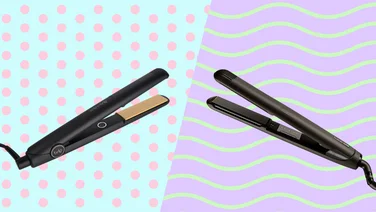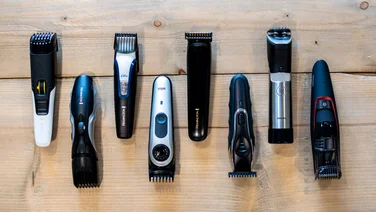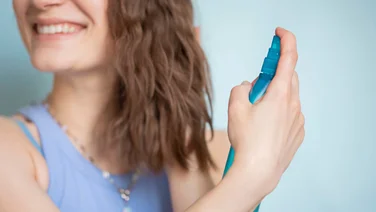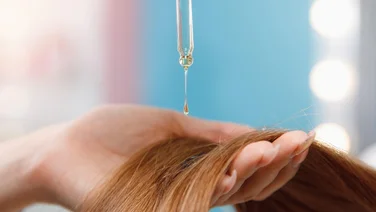To help us provide you with free impartial advice, we may earn a commission if you buy through links on our site. Learn more

Damaged hair can affect your confidence and be hard to style, as the protective outer layer ends up being compromised leaving the inner layers exposed and vulnerable. This can lead to breakage, split ends, weakness and a dull appearance. It also tends to be dry and brittle too.
Not only that, damage to the follicles or roots can affect growth and vitality. This can cause hair loss and thinning, which can be stressful. Worried about damaged hair? Read our guide below to discover what the causes are and how best to tackle them.
READ NEXT: Best heat protection sprays
What causes damaged hair?
This can be caused by a variety of different things that affect its strength and structure. Understanding what causes damaged hair is the first step in working out how to repair it and stop any future deterioration.
Using heat styling tools like blow dryers, straighteners and curlers – especially on a high setting or without using a heat protector – can cause thermal damage. The heat that these tools use weakens the protein structure of the hair, which causes it to become brittle, dry and more prone to breakage.It’s a similar story if you use chemical treatments. Overprocessing the hair with bleaching, colouring, perming or relaxing can severely damage the hair cuticle. These all strip the hair of its natural oils and change its chemical makeup making it more susceptible to dryness, breakage and split ends.
Being rough with your hair, especially when it’s wet can contribute to breakage and stretching. Tying it back too tightly, using accessories that snag or poor quality brushes and combs can all damage your hair too.
Exposure to harsh environmental conditions like the sun, wind and pollution can also play their part. UV rays from the sun can weaken your hair’s structure, while pollutants can strip its natural oils and contribute to dryness.

Washing too frequently or using harsh shampoos can strip away the natural oils that keep the hair moisturised. Lack of moisture leads to dryness and makes it more susceptible to damage. Skipping the conditioner or using one that doesn’t suit your hair type can contribute to dryness and tangles too.
The health of your hair is closely linked to your overall wellbeing. A healthy lifestyle will help to keep it in good condition (as well as everything else). You need to follow a balanced diet, exercise, get enough sleep and take care of yourself if you want strong, healthy hair.
READ NEXT: Best hair masks
How to repair damaged hair
To repair damaged hair, you need to be consistent. Regular trims are essential to remove split ends and existing damage. If you skimp on these, doing so can lead to breakage and weakening of your hair. Scheduling a trim every six to eight weeks can help get your hair back to health.

Choosing the correct products to repair damaged hair is hugely important. Go for gentle shampoos and avoid harsh ingredients that strip your natural oils. Instead, choose one with a sulphate-free formula and try to wash your hair two to three times a week to avoid drying it out. During shampooing, focus on the scalp and handle your hair gently to minimise friction and breakage.
Conditioning should be an essential part of your routine if you have damaged hair. Deep conditioning at least once a week is even better to restore moisture. You can also use bond-building masks to help repair disulphide bonds or polypeptide chains inside the hair – these help to build its structure back up from within. Using hair oils to add shine and moisture back after washing and drying is also a great idea.
Give your hair a break from heat styling tools too. If you have to use heat, apply a protective spray or serum beforehand to create a barrier. Whenever possible, air-dry your hair to minimise damage. Try out some “protective styles” that you don’t need to use heat for, or go for styles that don’t rely on hair being tightly pulled away from your face.

When detangling, use a wide-tooth comb, starting from the tips and gently working your way up to the roots. Avoid brushing wet hair with a regular brush, as wet hair is more prone to breakage.
While a healthy lifestyle won’t repair damaged hair, it will contribute to new growth, which will support new strands coming through to be stronger and healthier. If you’re struggling with hair breakage or damage and can’t work out why, it’s worth taking a closer look at your lifestyle as well as your daily routines.






